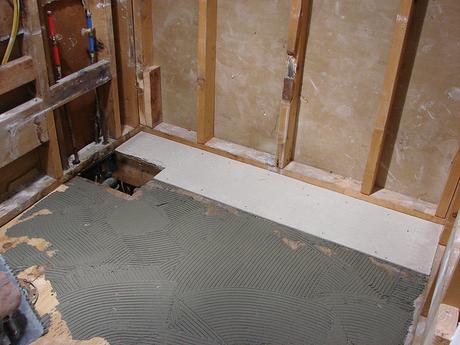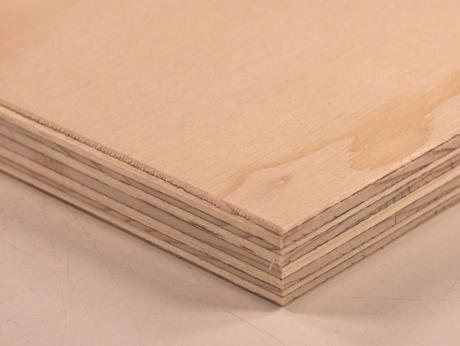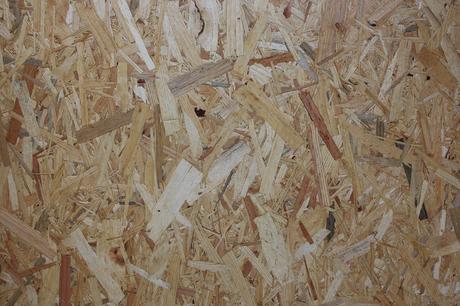The subfloor material you choose for your bathroom remodel should be of high concern. It is important because the subfloor needs to be able to withstand the high moisture levels in a bathroom, and not all materials can handle such a tremendous task. It prevents water from seeping into areas around the sink, toilet, and bathtub, which are more prone to exposure to water. By choosing the right material from the start, your bathroom will stand a better chance of withstanding long term damage. Excess moisture in the subfloor is a common reason for early replacement of bathroom flooring, but it can be prevented by choosing the right material from the beginning.

Image via WikiMedia
Wait, What is a Subfloor Anyway?
A subfloor is the lowest structural layer beneath the finished flooring. Installed directly over the joists, the primary function of a subfloor is to create a flat solid surface for the finished flooring to rest on. Generally, this only refers to a layer of plywood but in the case of bathrooms, it includes an underlayment of concrete backerboard as well. Concrete backerboard helps protect the plywood from water damage and helps prevent bending that leads to cracked tiles and uneven flooring.

Concrete backerboard installed over plywood subfloor. (Image via Flickr)
Plywood as a Subfloor Material
Traditionally, exterior grade plywood has been the subfloor material of choice for many bathroom flooring projects. Plywood is made by gluing alternating layers of wood veneer. CDX plywood (¾”) in particular is used often because it has a high level of resistance to moisture and humidity. Nevertheless, plywood is still a wood product and is subject to the effects of excessive moisture in the long run. It can stain, warp, swell, and suffer from problems with mold and mildew. Proper installation of the cement-based backerboard using water-resistant mortar/thin-set will help prevent this, as well as proper tile installation.

Image via WikiMedia
Enhanced Plywood
Enhanced plywood is treated with a layer of water-resistant coating that makes it much more resistant to the long term effects of moisture. Georgia-Pacific offers Plytanium DryPly which is designed to resist the problems created by high moisture and humidity. Plywood tends to be stiffer than other subfloor materials, making it a great choice for tiling which requires a stiff solid surface. Tile can crack easily when flexed, but a stiff subflooring helps prevent this.
OSB Subflooring
Oriented strand board (OSB) is similar to plywood but the structural differences are what set them apart. OSB is created using 3”-4” strands of wood which are then pressed together using glue. This creates a more structurally consistent board that stands up better to moisture. However, OSB is known for swelling around the edges when exposed to water. For tile flooring, this can cause bending and cracking, which is why it is discouraged as a subfloor material for tiling.

Image via WikiMedia
Enhanced OSB
Enhanced OSB, just like its plywood counterpart, is designed to resist moisture. Enhanced OSB is more resistant to swelling around the edges. It is created using a water resistant resin. AdvanTech is a new enhanced OSB that comes with a 50 year warranty.
The right choice of subfloor material will also depend on your budget and the overall size of your project. Plywood made from different types of wood will vary in price. When it comes to building materials, you’re likely to save more money in the long run by spending a little more from the start. Cheap materials can cause more problems that will cost even more money to replace.
About the Author
Cheryl Khan loves to spend her weekends remodeling and fixing things around the house. Follow her on Twitter for the latest DIY advice.
